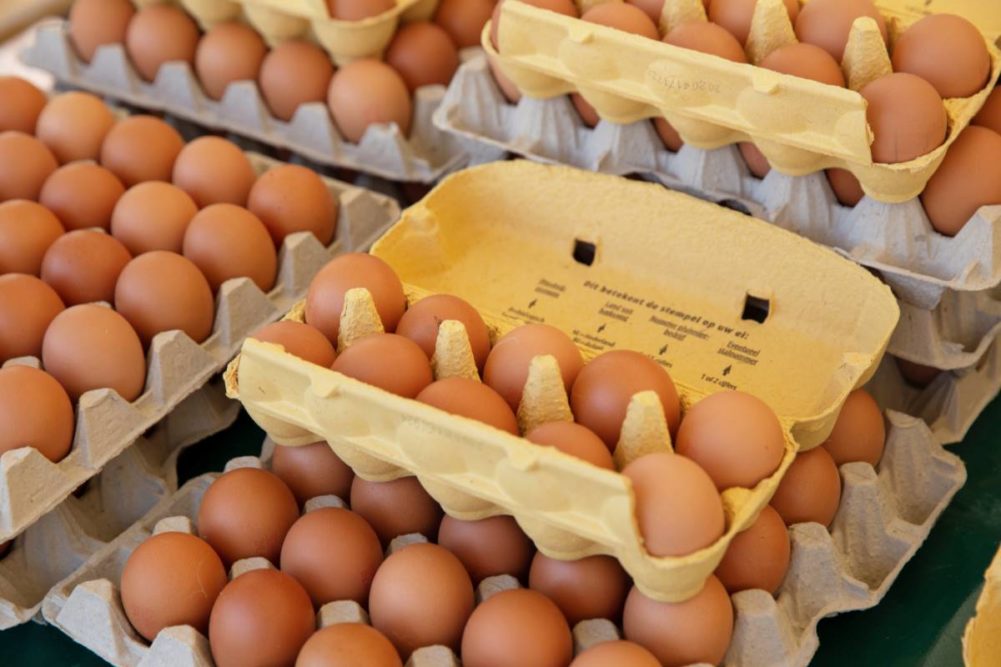 Josh Sosland, editor of Milling & Baking News.
Josh Sosland, editor of Milling & Baking News.KANSAS CITY – Over the course of 2022, market conditions for nearly all baking ingredients have been trying for purchasing executives. Even by this standard, though, the market for egg products stands out for its difficulties. Supplies have been ravaged by an outbreak of highly pathogenic avian influenza (HPAI) that has persisted for much of the year. It is the second such outbreak in the past 10 years.
For level setting purposes, standard patent bakery flour prices since 2015 have experienced numerous periods of volatility, creating headaches for purchasing executives. But a doubling of flour prices has occurred only once — a 10-week period earlier in 2022. By contrast, eggs since 2015 have endured three waves of dramatically higher prices — in 2015, in 2017 and 2022. All told, prices have been more than double year-earlier levels a combined 88 weeks during this period with peak gains early in 2022 from 52 weeks earlier up nearly 400% for dried whole eggs. Mid-December prices of $13.75 per lb for dried whole eggs were up 392% from the year before and were up a whopping 715% from levels prevailing in 2016-17, when prices bottomed. Egg white and egg yolk prices also have been strong. Graded egg prices set record highs multiple times in 2022. Previous surges were followed by severe price declines, adding to the difficulties of ingredient buyers looking to secure adequate supplies but reluctant to be caught holding large inventories ahead of a price collapse.
In recent weeks, the number of birds destroyed to date in 2022 because of potential exposure to HPAI hit 57.53 million, topping the 50.5 million destroyed during the wave of 2015. In the 2015 episode, more than 80% of the birds euthanized were layers.
It may be tempting to dismiss concerns about egg prices as inconsequential given volumes used by the baking industry would seem to be little more than a rounding error compared to flour. Census of Manufactures data from the 1990s showed commercial bakeries using a total of 135 million lbs of liquid, dried and frozen eggs for bread and cake products, compared with 9.2 billion lbs of flour, 1.5 billion lbs of sweeteners and 0.9 billion lbs of shortening. But usage of eggs varies widely by product in flour-based foods. Most bread baked in the United States contains little or even no eggs, but the ingredient is far more consequential in typical cake and cookie formulations. And at recent prices, dried whole eggs were 65 times more expensive, pound for pound, than flour.
At these prices, the impact of eggs on overall ingredient costs for certain of these products is nothing short of eye-popping. Egg products recently accounted for 53% of the ingredient costs of cake donuts, 57% of the ingredient costs of devil’s food cake and 19% for shortbread cookies. So, in the case of devil’s food cake, eggs needed for a standard formulation cost more than the flour, sweetener, shortening and cocoa combined. The percentages, based on ingredient indexes compiled each week by Milling & Baking News, compare with 21%, 24% and 5% for the same products, respectively, in December 2016.
Ingredient makers have worked to develop egg replacers using components such as modified starch or protein isolates. The effectiveness of these products has improved over time, but for most grain-based foods, these ingredient alternatives can replace no more than 50% of the eggs in a formulation without adversely affecting finished product quality. Additionally, because of extraordinary demand, supplies of replacers have been tight and prices have been high.
How the current outbreak plays out remains to be seen. That such an outbreak would occur only seven years after the last one sends an ominous signal about the risk for further episodes in the future. Fears that future HPAI strains may prove transmissible to humans, objections to taxpayer funds being used to deal with outbreaks and continued pressure for change from those concerned with animal rights about conditions on chicken farms suggest the risk of further challenges for egg buyers will persist long into the future.






